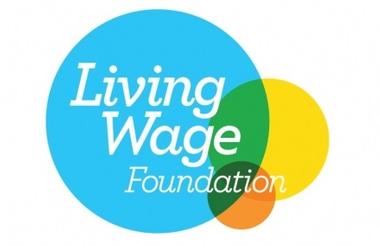One in seven charity workers are paid below the real living wage, a lower rate than across the economy as a whole, according to the Living Wage Foundation’s (LWF) latest report.
A higher proportion of charity sector workers are being paid the real living wage than at any time in the past five years, the report found.
Some 14.1% of jobs in the third sector pay below the real living wage, which recommends that workers are paid £9.90 an hour across the UK or £11.05 in London.
Coupled with the cost-of-living crisis, the foundation argued that low paid third sector workers “risk being swept away”.
The real living wage, calculated according to what LWF deems the true cost-of-living to be, contrasts with the government’s National Living Wage, which rules people over the age of 23 to be paid a minimum of £9.50 an hour with no London weighting.
LWF: A decrease in low-paid workers may not be as positive as it seems
The charity sector has a lower proportion of low-paid jobs (14.1%) than the private sector (22.1%) but higher than the public sector (5.5%), whereas 17.4% of workers are paid below the real living wage in the public and private sectors combined.
From 2015 to 2021, the proportion of employees earning below the real living wage in the charity sector has gone from 16.9% to 14.1%, but this drop of 2.8 percentage points is less than half the decline in that time for the rest of the UK economy.
The Living Wage Foundation said though there was a decline in low-paid third sector workers, this may not have been purely due to an increase in pay.
With the Covid-19 pandemic, low-paid workers were more likely to become unemployed, making the scale of low-pay decrease since the crisis. Instead of workers enjoying pay increases, it may be due to their being less low-paid workers in the labour market altogether.
Women and young people more likely to be low-paid
The report found 16.6% of women in the charity sector are paid below the real living wage, compared to only 10.3% of men.
Of all low-paid jobs in the sector, 71.3% are held by women. Women are more likely to work in the sector, and more likely to be low-paid within it, the report found.
Some 58.4% of 16–19-year-olds are paid less than the real living wage in the charity sector, LWF found.
People aged 30-34 are the least likely to earn below the real living wage in the sector, with under 10% on low pay.
This may be because the government’s mandatory national minimum wage is the lowest for younger people. However, LWF argues young people should be paid the real living wage for doing the same work as those older than them.
Ethnic minorities are more likely to be low paid
Certain ethnic groups, such as Pakistani, Bangladeshi, Black African, Black Caribbean and Black British groups are more likely to earn below the real living wage in the sector.
Geographically, the report found the highest level of low pay in the sector is located in the North and Midlands.
Levels of workers paid below the real living wage are 19.4% in the North West, 18.8% in the East Midlands, and 17.8% in the West Midlands.
‘Everybody needs a wage that meets their everyday needs’
Katherine Chapman, director of LWF, encouraged third sector employers to commit to providing the real living wage.
She said: “Many low paid third sector workers faced enormous pressures to make sure the most vulnerable people in society were supported during the pandemic.
“Now, despite already struggling to keep their heads above water, the one in seven third sector workers still paid below the real living wage face being swept away by the rising tide of high living costs.
“Everybody needs a wage that meets their everyday needs, but it can’t be right that so many of those who look after our loved ones and the most vulnerable in society are struggling to afford even the basics.
“We strongly encourage all those third sector employers that can afford to do so to commit to pay a real Living Wage and for funders to provide enough to support real living wage jobs through the grant-making process. The real living wage is a lifeline for workers during these difficult times – and will help ensure a sustainable and resilient sector in the future.”
The All Work and Low Pay report was produced by the LWF. The data was gathered through quantitative research of the Annual Survey of Hours and Earnings, the Labour Force Survey and Omnibus polling of more than 2,000 UK adults over 18. Qualitative interviews with third sector workers and their employers also informed the research.
Related articles












